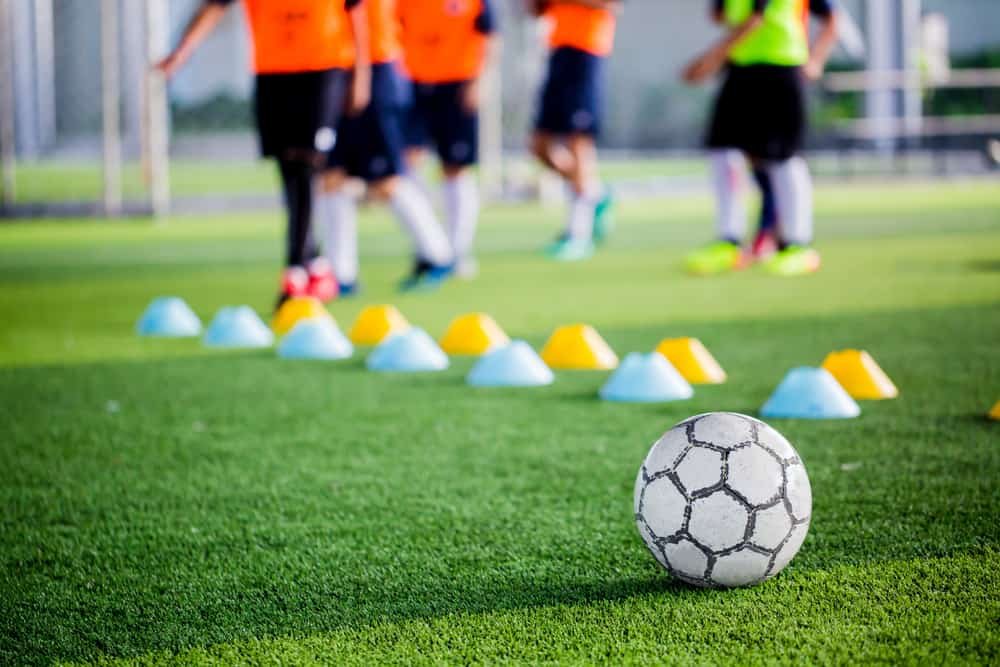
Soccer tryouts can be both fun and a bit nerve-wracking ‒ especially if this is your first time trying out for a team. There are quite a few things you need to bring to the tryout, and forgetting any one of them could impact your chances at making the team.
To properly gear up and have the best success at making the team, you can use this comprehensive list of things to wear and bring to your soccer tryouts.
These are 12 things to wear and bring to your soccer tryout.
1. Cleats
Cleats are the number one thing you need to remember to bring to your soccer tryout. The coaches in charge of the tryout probably won’t let you on the field if you don’t bring cleats. And this isn’t because they’re mean or strict ‒ cleats help you maintain your balance on the grass.
If you get on a soccer field with shoes that have flat bottoms, you’re putting yourself at risk of slipping and falling ‒ which can have some serious and potentially dangerous repercussions.
Fortunately, you don’t need to go spend hundreds of dollars on top-tier cleats to be an effective soccer player. A decent pair typically costs between $30 and $60 ‒ even though lower-priced shoes have some minor flaws, a pair like this should be more than good enough for a soccer tryout.
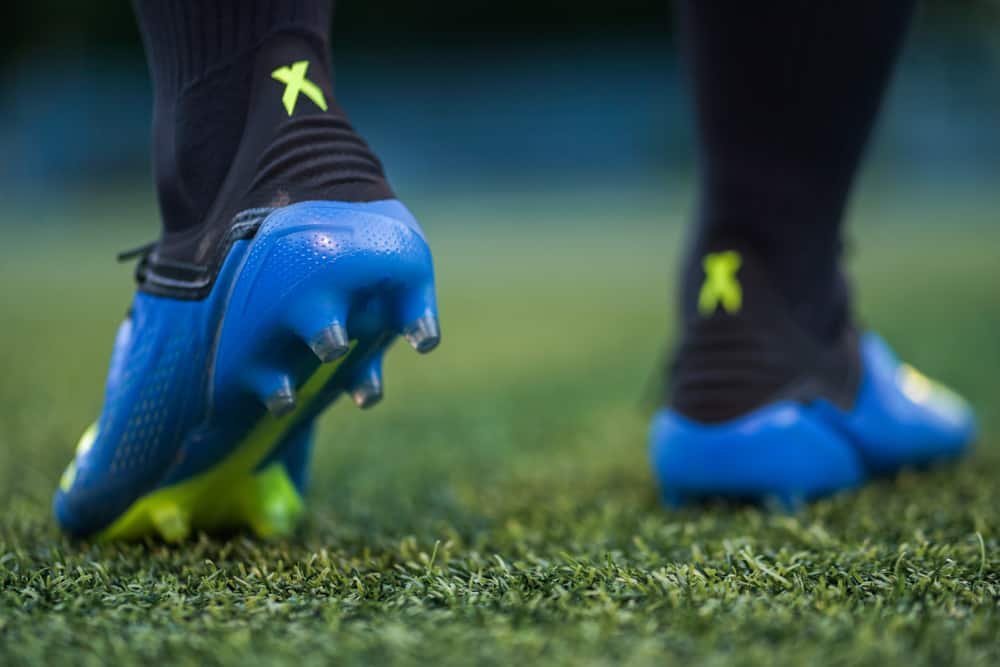
2. Shin Guards
After cleats, shin guards are the most important thing you need to bring to your soccer tryouts. From a safety perspective, these might be more popular than cleats are. If you don’t bring a pair of shin guards, the coaches certainly won’t let you try out.
Again, this is out of concern for your own safety. While soccer is generally considered a safe contact sport, much of this perception is because shin guards exist. Without them, you’re at serious risk of catching full-strength kicks directly on your shin bones ‒ which can easily cause a broken bone.
Shin guards come in a number of different sizes‒ the comfiest types tend to be smaller, but be careful with prioritizing comfort over safety. I recommend finding a balance between comfort and size ‒ but if you need to sacrifice one over the other, I recommend going with safety over comfort.
3. Long socks
If you want to keep your shin guards attached to your body, you’re going to need long socks in which to place the shin guards.
Some shin guards do have velcro attachments at the back that make long socks optional, but I recommend wearing long socks even if you do have these.
For starters, any uniform you’re going to wear is going to include knee-high socks. If you’re not used to wearing socks this long while you’re practicing, it could affect your ability to play when you do start playing in games.
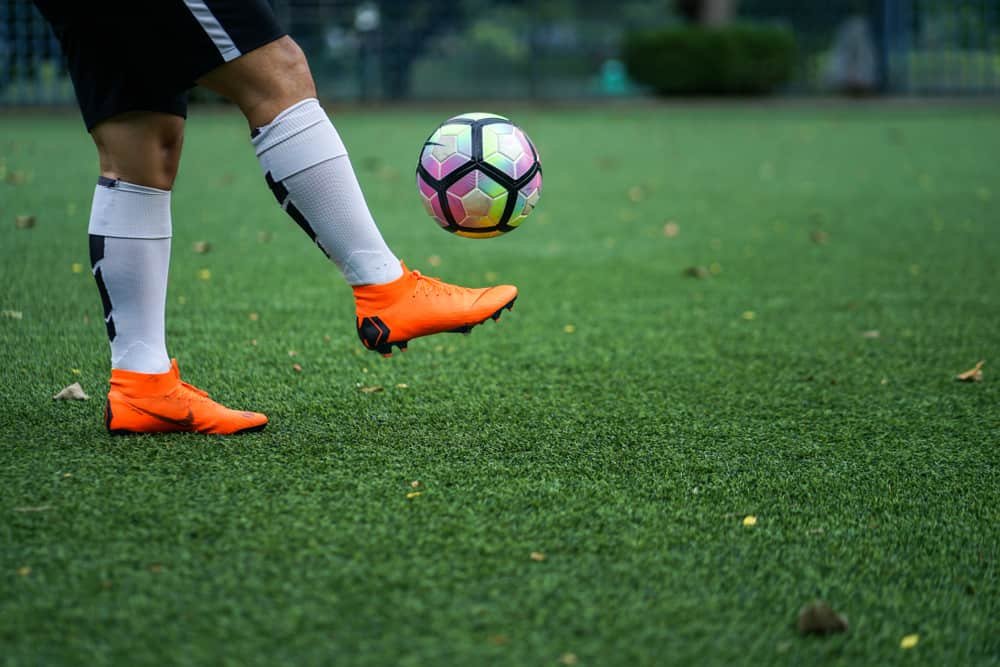
Velcro attachments can also come undone during practice or games. If this happens, you’re going to need a secondary method of keeping your shin guards attached to your legs ‒ this is where long socks can come in handy.
4. Energy-restoring snacks
Feeling lethargic or sluggish in the middle of your soccer tryout could ruin your hopes of making the team. If you do feel a lack of energy start to affect your gameplay, eating something to help refuel your energy stores can save you.
If you’re not sure what kind of energy-restoring food you should bring, this list should help you:
- Oranges
- Bananas
- Celery
- Peanut Butter
- Cheese and crackers
- Berries
- Apples
- Energy bars
5. Water bottle
Soccer is, arguably, one of the most tiring sports on the planet. Professional soccer players routinely run more than 7 miles during the average 90-minute game.
While you probably won’t be running this much in your soccer tryout, you’re still going to be sweating a fair amount. If you don’t replenish that lost sweat with water, you’re putting yourself at risk of heat exhaustion. A lack of water will also affect your performance in the latter part of the tryout, as the pangs of dehydration will definitely start to affect you and cause a decrease in your ability to play well.
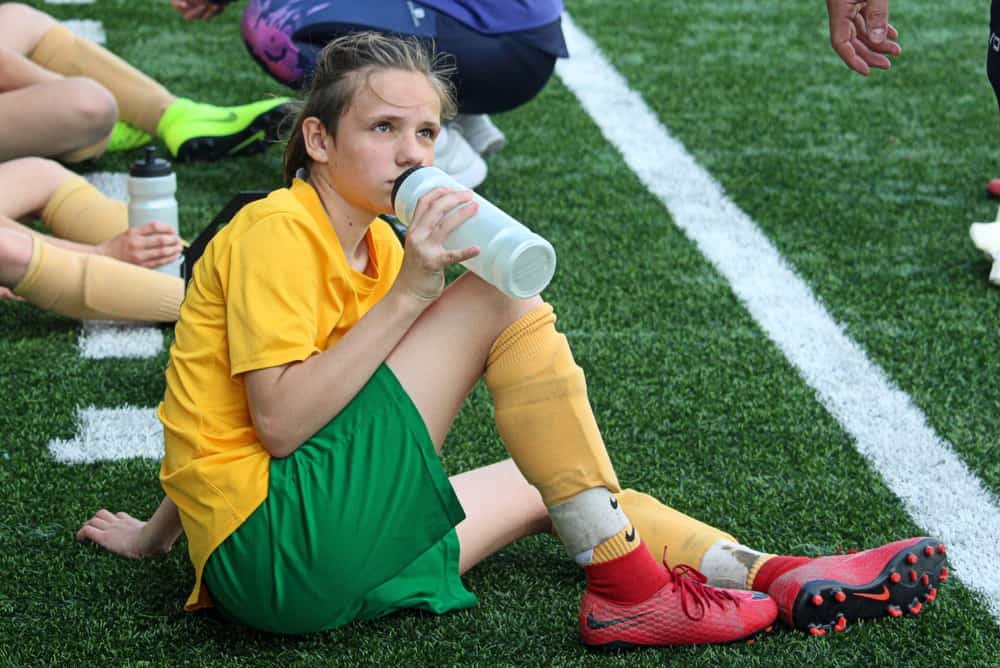
Health and performance risks aside, not bringing water to a soccer tryout could also show coaches that you aren’t fully prepared for the tryout, which could affect whether you make the team or not.
6. Comfortable clothing
Being comfortable during your tryout is essential to playing at your highest level. When purchasing clothes for the tryout, make sure everything fits well and doesn’t rub or chafe against your skin.
You should also double check that the tryout doesn’t have any tryouts or uniform requirements. When I tried out for my high school soccer team, every single player had to wear a plain white T-shirt. If one of us didn’t wear one, everyone would have to run laps to pay for that player’s mistake.
So make sure to check for a dress code before gearing up for your tryout ‒ not only can it save you from being cut, it can also prevent your future teammates from thinking negatively of you and your lack of preparation.
7. Mouthguard
While not as essential as shin guards or cleats, wearing a mouthguard is a pretty good idea if you want to ensure your teeth remain intact and undamaged.
These are especially necessary if you’re a goalie. Goalies do a lot of diving into fast-moving kicks. While proper diving form should minimize the risk of a kick to the face, the possibility is always there. As such, goalies without mouthguards are at a much higher risk of tooth damage than goalies who do wear protective mouth gear.
8. Soccer ball
Most tryouts should provide soccer balls, but some require you to bring your own ball. Check the tryout information sheet or website to find out whether you need to bring your own soccer ball or not.

Even if the tryout will be providing soccer balls, it’s still a good idea to bring your own. If you arrive early, warming up by kicking around a ball is a pretty smart idea. You can also get to know some of the other players who arrive early.
9. Bug spray
Soccer is most often played in warm weather ‒ which is the exact kind of weather insects like to fly around in. To prevent itchy, distracting bites from bothering you during the tryout, bring some bug spray and apply it before the tryout begins.
When you inevitably start sweating in the middle of the tryout, you should reapply it during one of your water breaks. You should also consider reapplying it if you start to get bitten at any point during the tryout.
10. Sunscreen
Sunburn is, unfortunately, one of the risks that comes with playing an outdoor sport that lacks covering for your face, neck, arms, and legs. To combat the painful red patches the sun can cause, you should also apply sunscreen when you put the bug spray on before the tryout.
If you can, try to find a sweat-proof bottle of sunscreen. Regular sunscreen will drip off your body as you sweat. Sweat-proof sunscreen provides some protection against this, but enough sweat will diminish the protection this kind of sunscreen provides too.
As such, you should also reapply this in the middle of the tryout ‒ especially if you feel yourself burning or see red patches appearing on your skin.
11. A small towel
This item might seem odd, but a small towel can actually come in handy. If you or someone else gets injured, you can place some ice in the towel and hold it against the injury to prevent swelling. It’s also a great tool for wiping sweat away from your forehead and eyes.
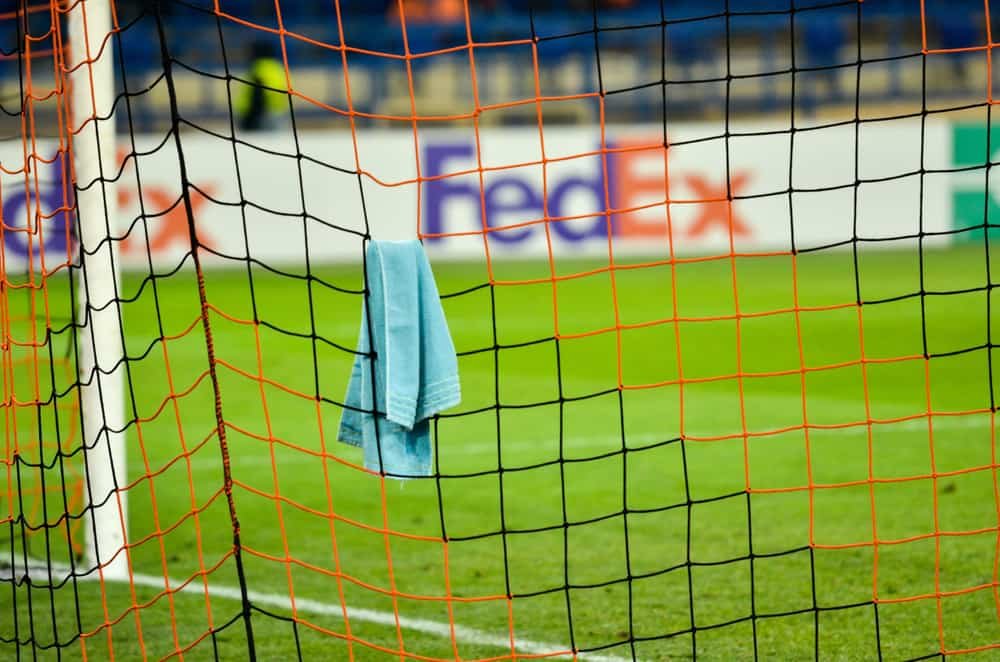
12. Wrist Sweatband
Towels are pretty good at wiping off sweat, but you can only use them during a break.
If you’ve got sweat pouring into your eyes in the middle of a drill or scrimmage game, you won’t be able to use a towel to clean up. A sweatband can come in handy in moments like these, as you’ll only need to reach up with your hand and wipe the sweat from your brow.
